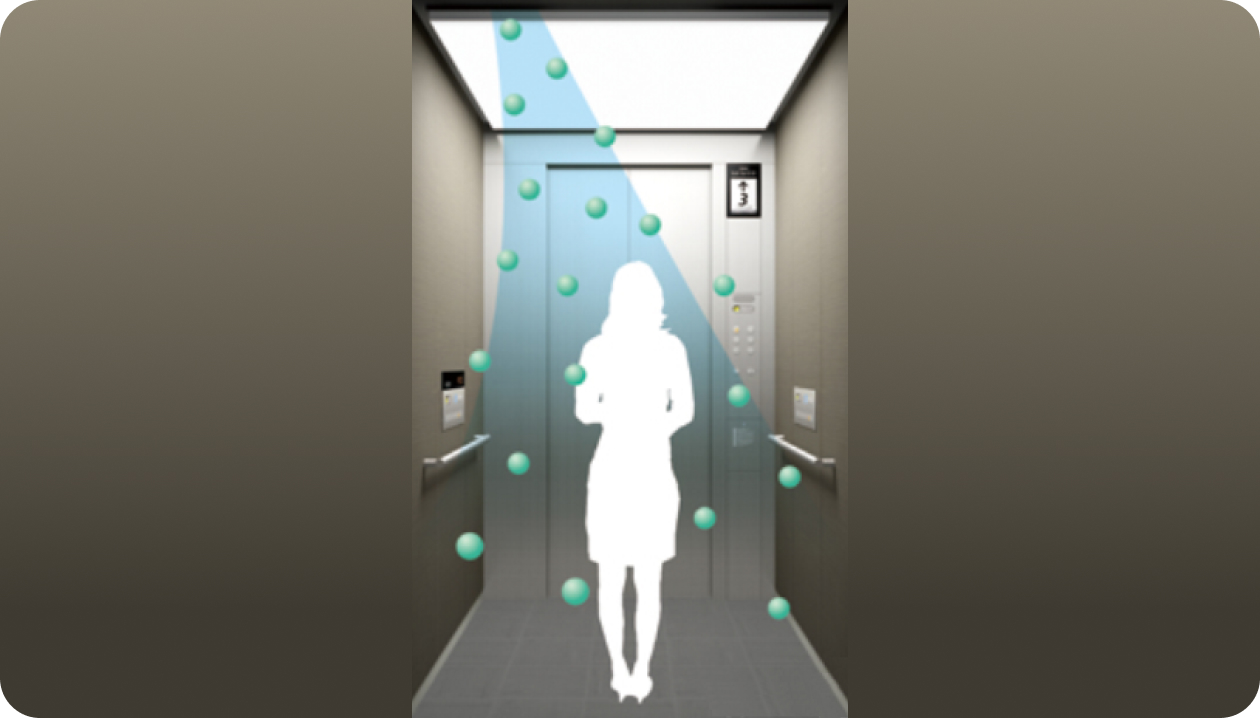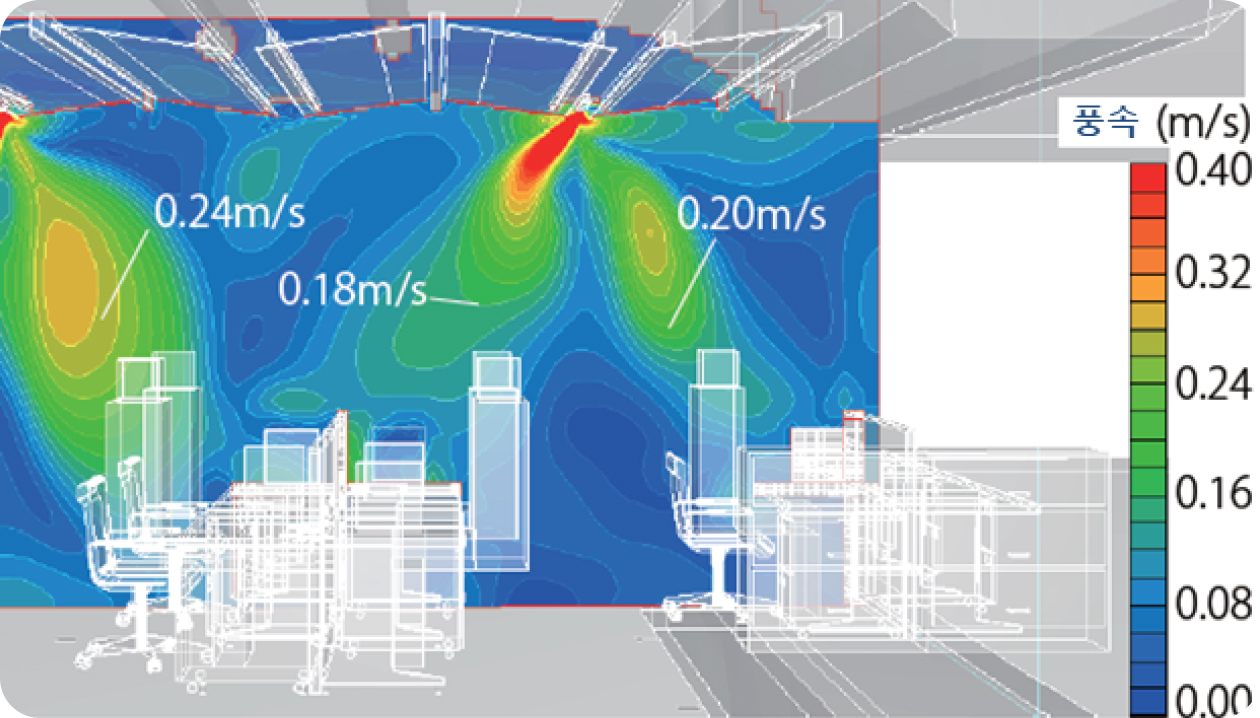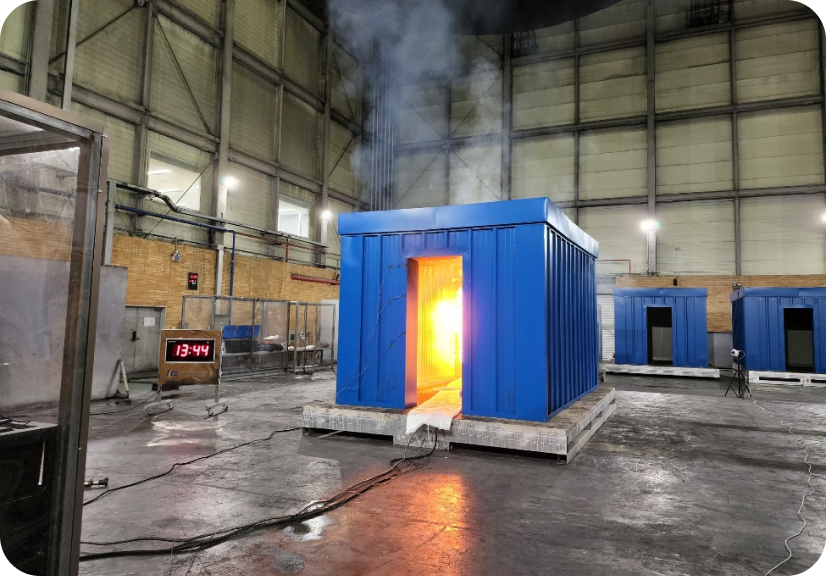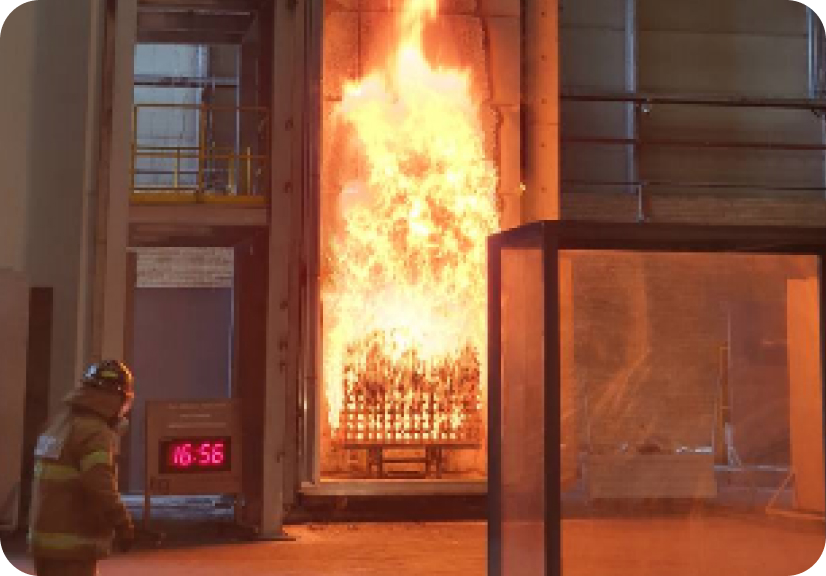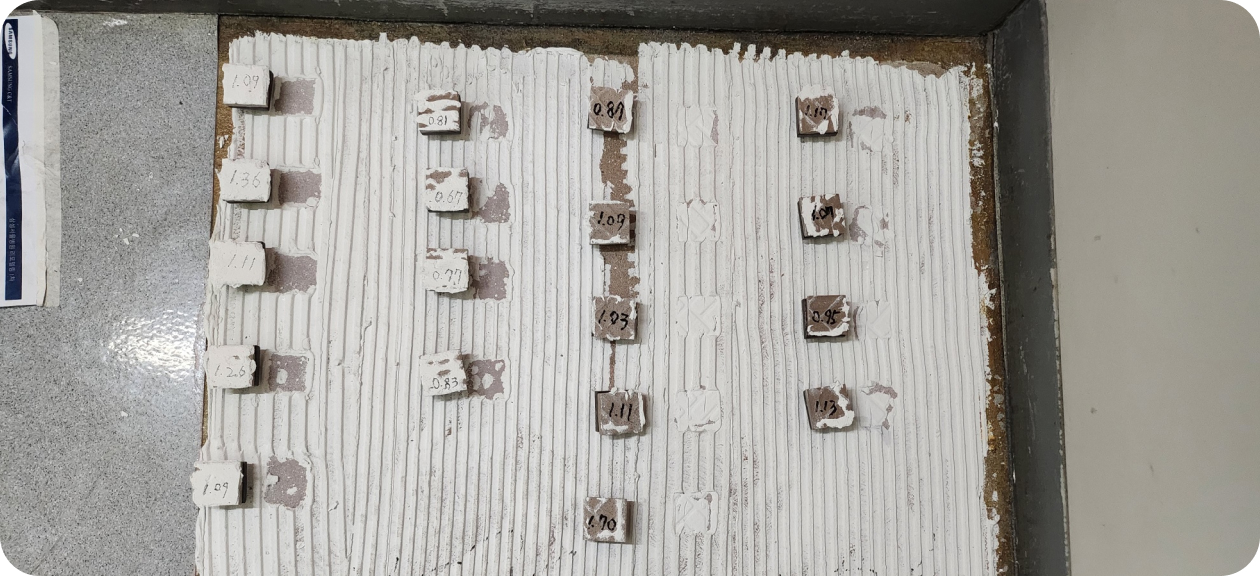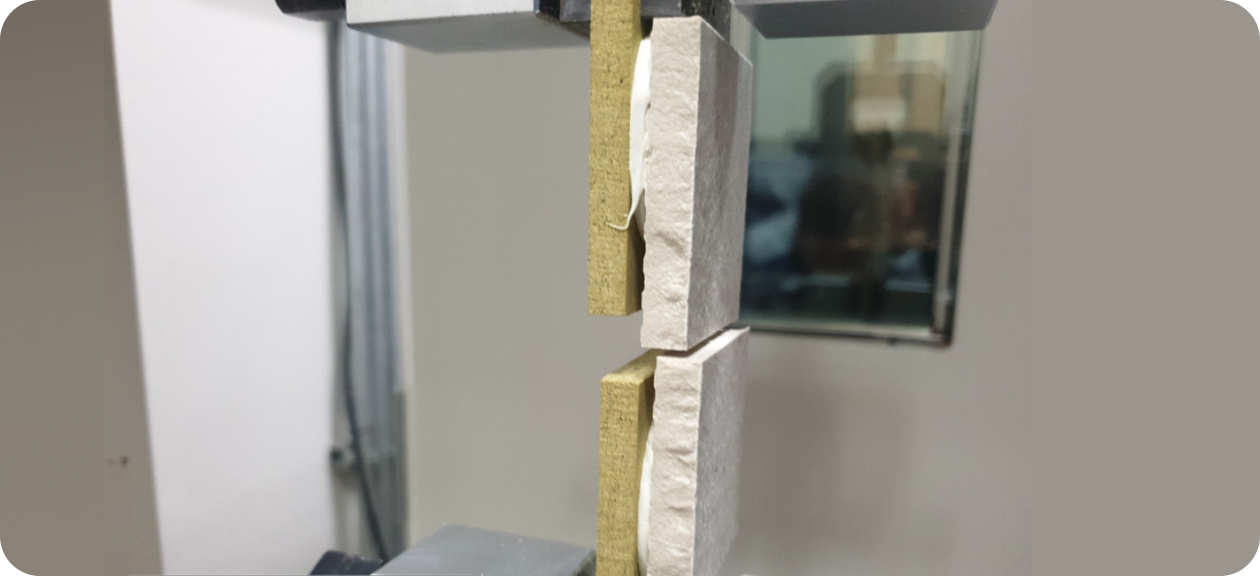Design and construction technologies that prioritize the environment, incorporating energy-saving measures, creating pleasant indoor environments that have proper temperature and humidity, air quality, and infectious disease prevention, and are made from eco-friendly materials.
Building Energy Simulation
Technology Overview
- This technology analyzes and optimizes building energy usage based on the building envelope, HVAC system efficiency and characteristics, and control methods, ultimately reducing energy consumption during operation
Technology Description
- By analyzing heat transfer within a building and calculating energy usage, this technology optimizes the performance and efficiency of the building's envelope, equipment, electrical, and control systems
Application Areas
- Optimized design of building envelope performance (window performance and thermal insulation)
- Selection of optimal facility system types, capacities, and evaluation of control methods
- Energy efficiency analysis and improvements linked to operational data
- Energy performance assessment for eco-friendly certifications such as LEED and Green Mark
-
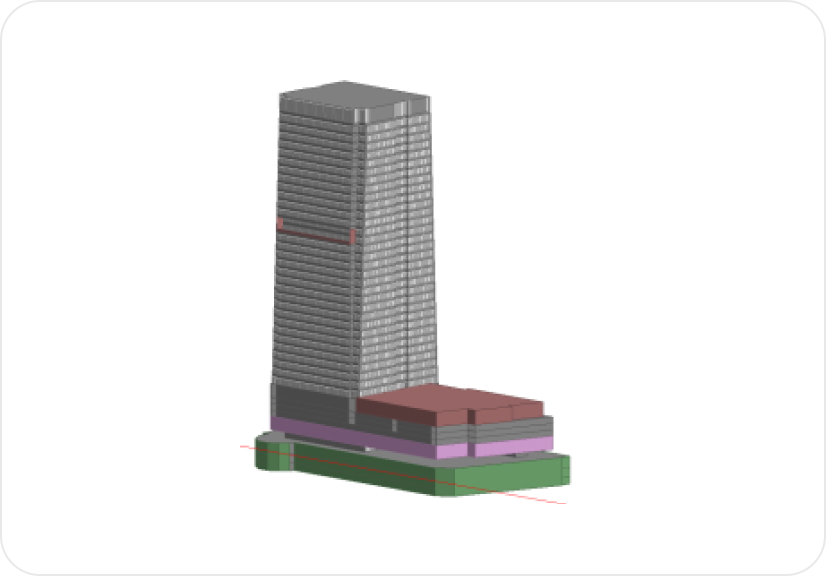
Building modeling
-

HVAC system modeling
-
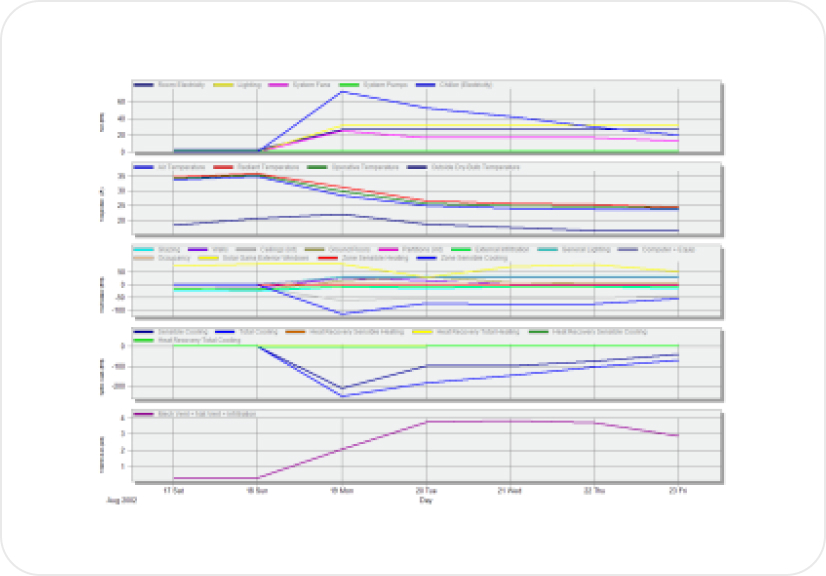
Data analysis and optimal design
Technology Application Status
- Neom Project, Saudi Arabia (2021)
- Optimal envelope design, facility system configuration, and renewable energy design for net zero energy implementation
-
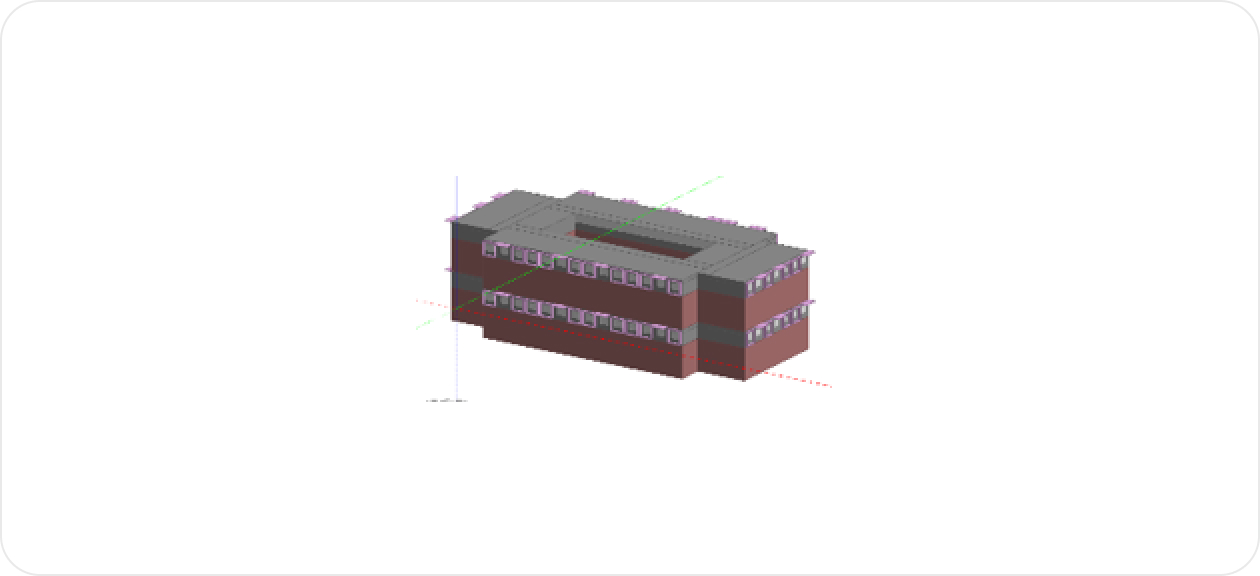
Neom, Saudi Arabia
-
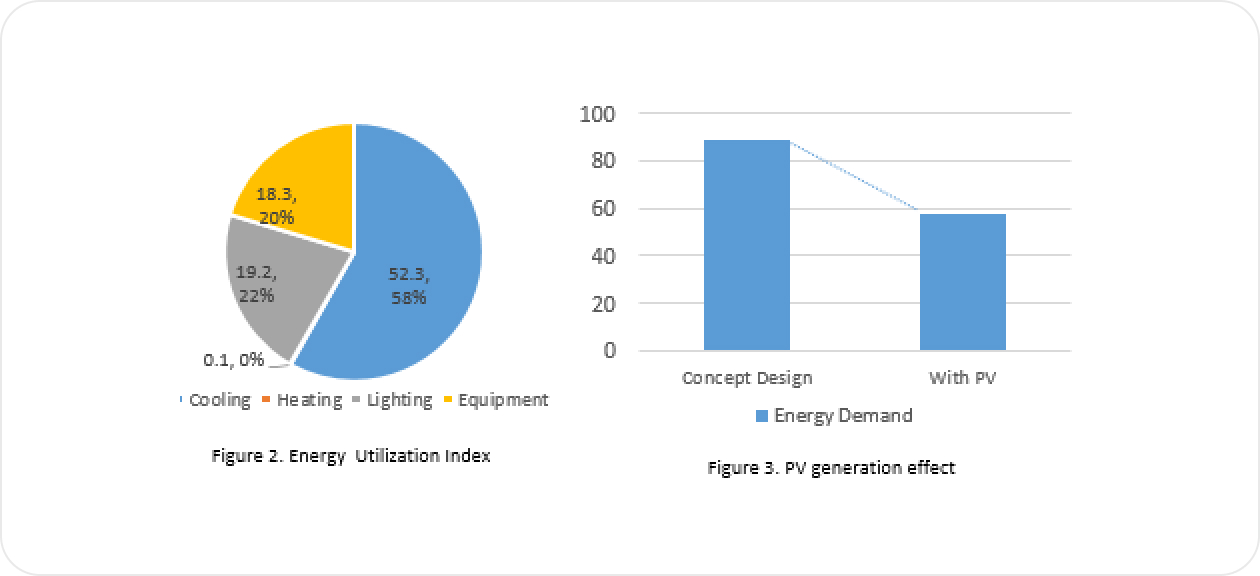
Energy index
| Project | Technology Application Details | Effect |
|---|---|---|
| Bank of Korea | Optimization of the heat source system | Cost reduction |
| Naver 1784 | Analysis of HVAC system efficiency and improvement proposals | Quality improvement |
| Semiconductor FAB | Review of LEED energy savings | Quality improvement |
Indoor Air Quality Measurement and Evaluation Technology
Technology Overview
- This technology aims to prevent Sick Building Syndrome and provide a healthy indoor air quality for occupants by evaluating the level of indoor air pollutants and improving the environment.
Technology Description
- Measuring, evaluating, and reducing harmful chemicals in indoor air
- Enforcing mandatory indoor air quality measurements for new apartment buildings
- Enhancing indoor air environment through pollutant identification and the implementation of on-site ventilation management guidelines
- Preventing Sick Building Syndrome and improving comfort by adhering to the indoor air quality management standards established by the Ministry of Environment and other organizations
- Conducting in-house measurement and analysis using experimental facilities
Technology Application Status
- Raemian (Elinity, Urban Park), Busan EDC, Samsung Electronics eX-Home, office buildings
- Improving indoor air quality by implementing focused on-site ventilation management, operating HVAC systems and exhaust fans, and opening ventilation windows following the increase in indoor chemical concentrations due to finishing work.
| Project | Technology Application Details | Effects |
|---|---|---|
| Raemian (Elinity, Urban Park), Busan EDC, Samsung Electronics eX-Home, office buildings | Conducting on-site focused ventilation management, indoor air quality measurement, and improvement | Quality improvement |
Environmental Noise Impact Assessment Technology
Technology Overview
- Assessing and mitigating construction site noise, transportation noise (road/rail/aviation), and noise from adjacent areas, designing noise barriers, and analyzing and evaluating the Soundscape (acoustic landscape).
Technology Description
- Conducting a noise impact assessment of nearby areas due to construction noise
- Predicting and mitigating noise generated during construction
- Environmental noise impact assessment and control technology
- Evaluating and controlling the impact of transportation noise from airports, roads, and railways
- Analyzing and assessing surrounding noise for sensitive facilities such as healthcare centers (Soundscape)
- Noise barrier design
-

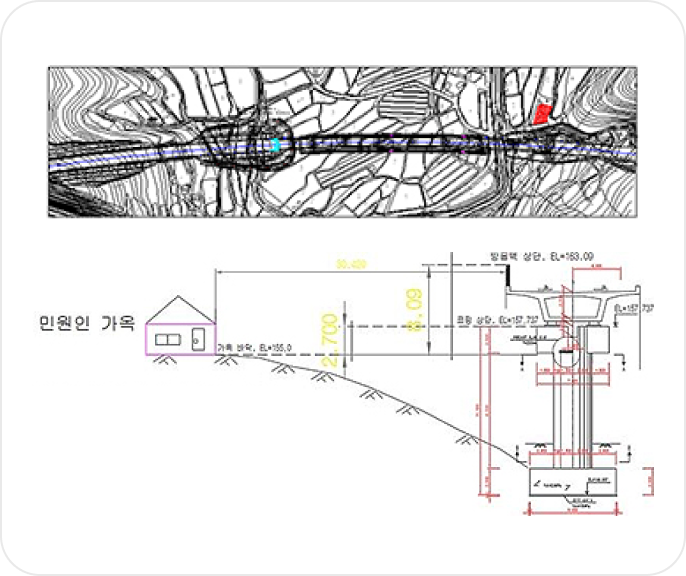
Transportation noise impact assessment and noise barrier design
Technology Application Status
- Construction noise prediction and improvement of Seocho Training Center (2015)
- Proposing noise reduction solutions through simulations during demolition and foundation work
-

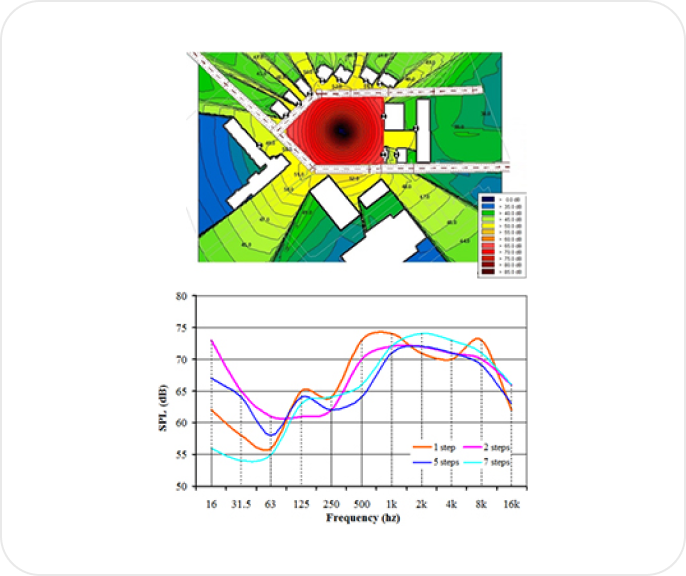
Construction noise prediction simulation of Seocho Training Center
| Project | Technology Application Details | Effect |
|---|---|---|
| Shilla Stay Mapo (2015) | Evaluating rooftop cooling tower noise impacts on nearby areas and suggesting alternatives, such as noise suppressors or barriers | Quality improvement |
Indoor Thermal Comfort Assessment Technology
Technology Overview
- This technology assesses occupant comfort and compliance with indoor environment standards by measuring temperature, humidity,and air circulation within indoor spaces, or through conducting occupant surveys.
Technology Description
- Improving quality by assessing the indoor thermal environment before and after a building’s completion
- Conducting quantitative diagnosis using physical measurements of the thermal environment and occupant surveys
- Comprehensively assessing a building's indoor environment and comfort, identifying energy-saving strategies
- Utilizing as a performance verification tool for securing eco-friendly certification credits
- Suggesting optimal HVAC system operation strategies, taking occupancy conditions into account
- Development of occupant survey program and measurement system
-
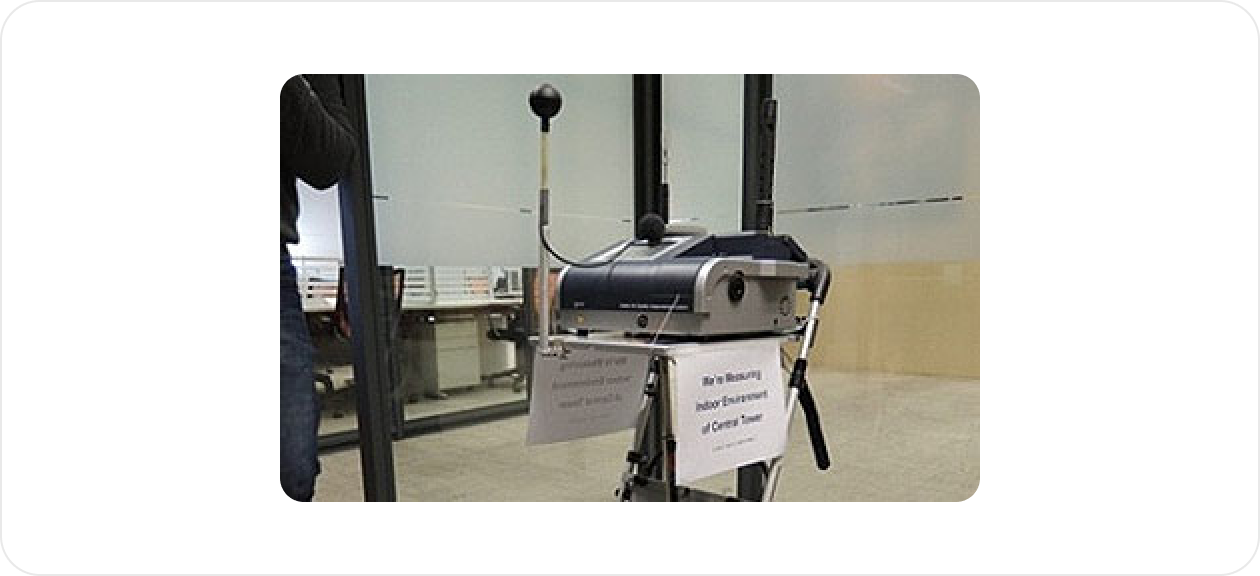
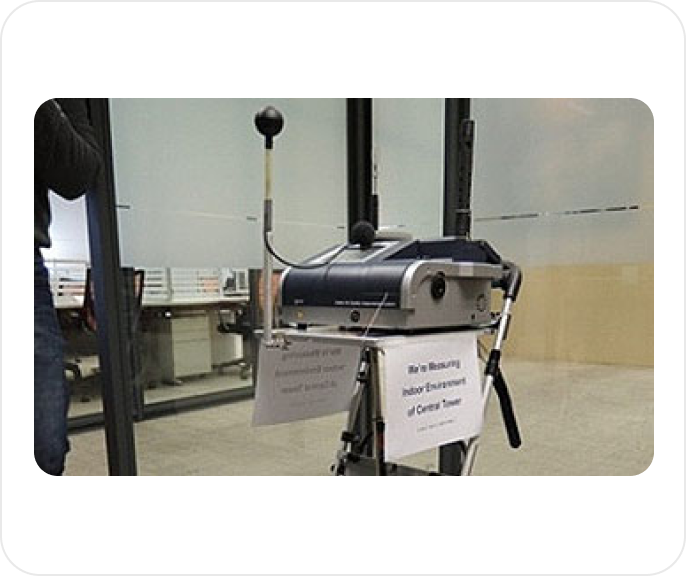
Comprehensive indoor environment measurement system
-
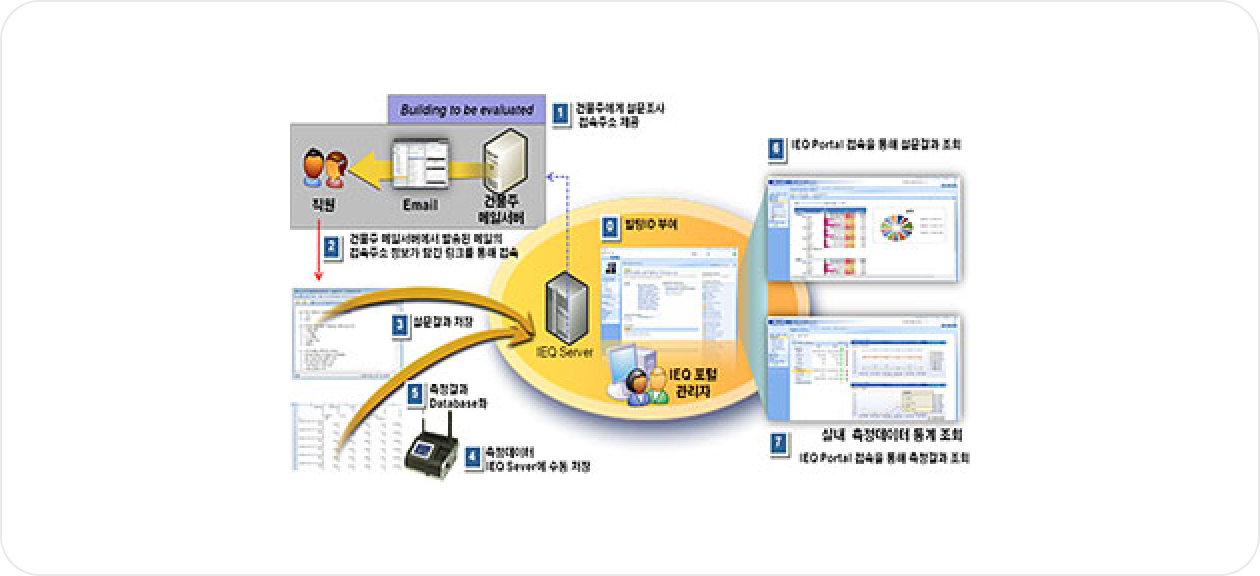
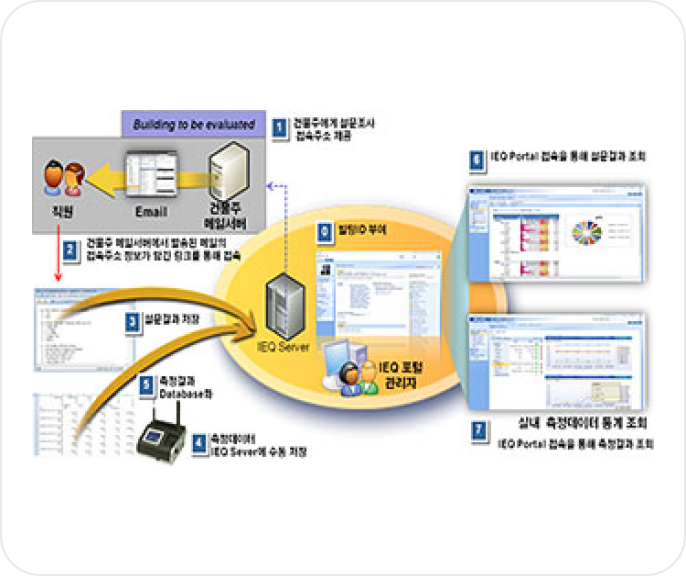
Occupant survey program framework
Technology Application Status
- MCS Tower, Mongolia (2014)
- Determining indoor environment requirements and design alternatives through the assessment of the client's office environment, leading to increased contract value and quality improvement.
-

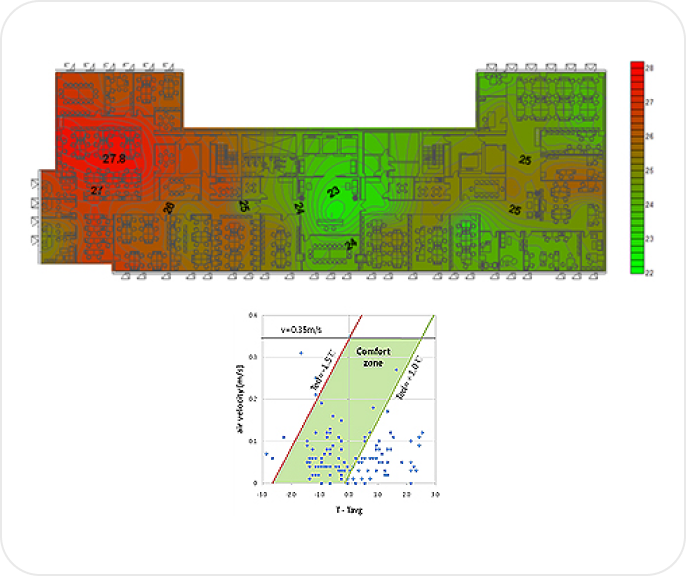
Thermal environment assessment through measurement
| Project | Technology Application Details | Effect |
|---|---|---|
| MCS Tower, Mongolia (2014) | Assessing the thermal environment using a comprehensive indoor environment measurement system and occupant survey program | Quality improvement |
| Seocho Building B (2012) | Assessing the thermal environment using a comprehensive indoor environment measurement system and occupant survey program | Quality improvement |
Eco-friendly Material Chemical Emission Assessment Technology
Technology Overview
- This technology evaluates materials with minimized chemical substances and odors to effectively control indoor pollution sources, offering a selection guide for the eco-friendly materials required in both Korean and international eco-friendly buildings.
Technology Description
- Conducting eco-friendly material evaluations, selections, and applications
- Selecting and applying eco-friendly materials by assessing the chemical emission of on-site materials ensuring healthy indoor air quality for occupants
- Operating in-house eco-friendly materials certification and registration system (since 2005)
- Systematic management of eco-friendly materials and assurance of performance reliability
- Consolidation of various standards, such as HB Mark and other environmental marks, into a database that aligns with the company's target indoor air quality and construction quality
Technology Application Status
- Raemian (One Bailey, Elinity, Urban Park, etc.), Busan EDC, and Samsung Electronics eX-Home
- Reviewing and assessing eco-friendly performance for on-site applied finishing materials
| Project | Technology Application Details | Effect |
|---|---|---|
| Raemian (One Bailey, Elinity, Urban Park, etc.), Busan EDC, Samsung Electronics eX-Home | Reviewing eco-friendly performance of materials applied on site Assessing chemical emissions Developing material-type specific pools | Quality improvement |
Infectious Disease Prevention Technology
Technology Overview
- This technology aims to create a safe indoor environment that is protected from the spread of infectious diseases by preventing the infiltration of external contamination sources and mitigating the dissemination of infectious diseases indoors.
Technology Description
- Proposing optimal technology for architectural planning, facility planning, and maintenance management, tailored to building use and size

Infectious Disease Prevention Technology Differentiation
- Securing and applying an antimicrobial and antiviral-related pool applicable to buildings under construction or bidding, providing a healthy indoor environment in which occupants can feel at ease.
-
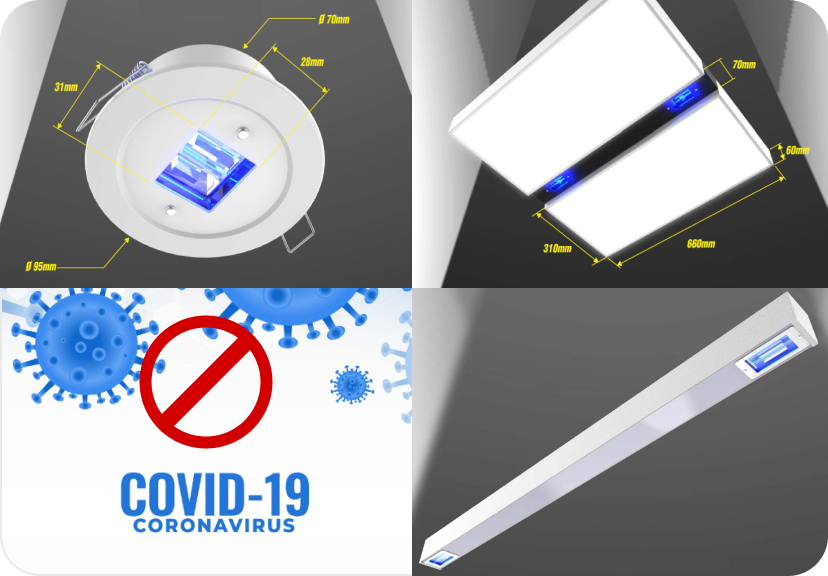
Ultraviolet germicidal lighting that is harmless to the human body
-
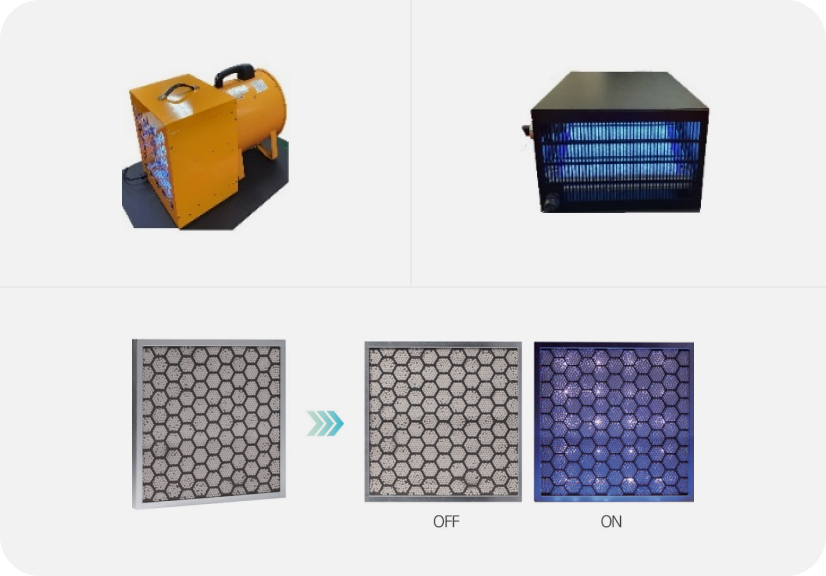
Photocatalyst module-utilizing devices
-
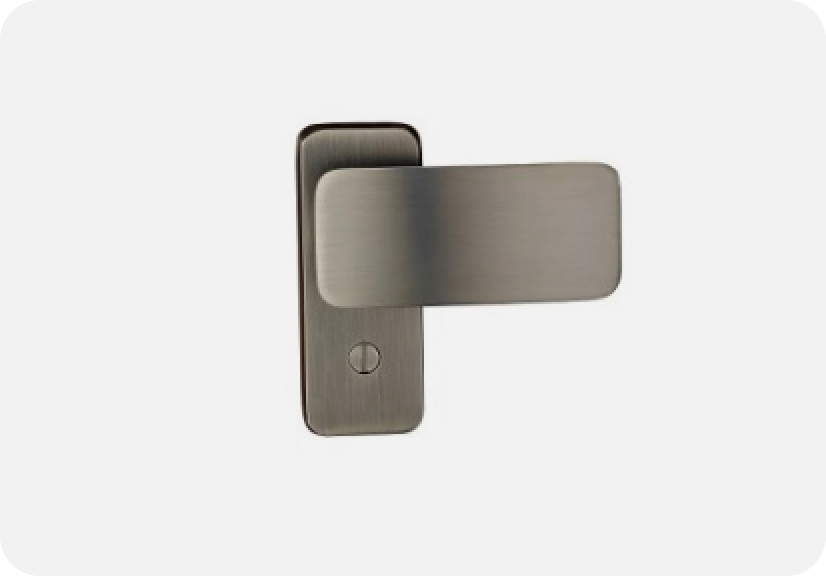
Antibacterial door handles
Technology Application Status
- Naver 1784 Project : Coronavirus infection prevention technology consulting (Dec. 2020 – Jun. 2021)
- Reviewing, verifying performance, and proposing infection prevention technology for offices, conference rooms, and elevators
- Giheung SDR : Differentiation of “With Corona” response technology (Jan. 2023 - )
- Reviewing and applying safe germicidal lighting and air quality improvement technology utilizing photocatalyst
Infection spread prevention review and analysis cases
Thermal Insulation, Condensation Prevention, and Airtightness Technologies for Buildings
Technology Overview
- This technology analyzes the thermal insulation, condensation, and airtightness performance of buildings through thermal analysis, experiments, and measurements, and addresses weak areas
Technology Description
- This technology identifies risks related to thermal insulation, condensation, and airtightness at each stage of projects, proposes alternatives, and conducts construction quality check tests to meet legal requirements and achieve the owner's desired level of insulation and energy performance goals. VE selects appropriate construction methods and materials and performs ENG work to prevent condensation defects.
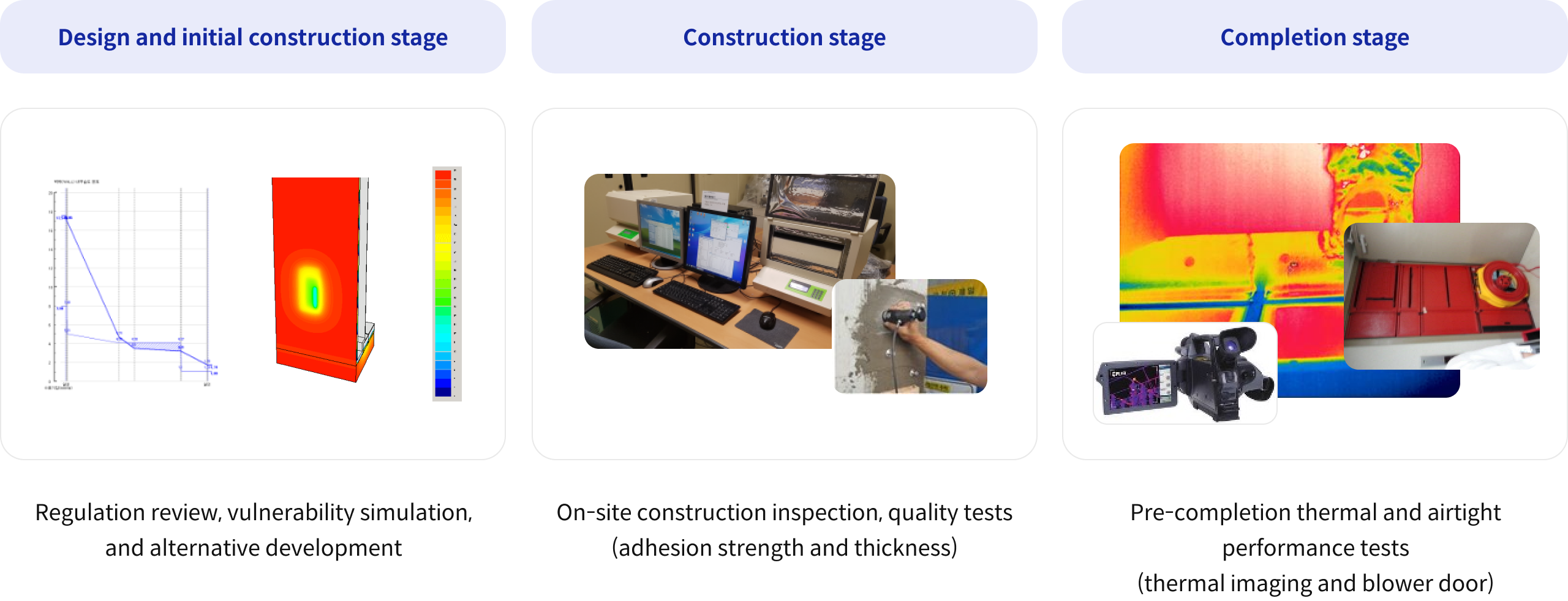
Technology Application Status
- Thermal insulation and condensation prevention technology
- Applying thermal insulation and condensation prevention technology to all semiconductor and display production facilities, and all architectural and housing project sites
- Developing Home&Shopping wet insulation method, and optimizing external insulation
- Optimizing external construction method at the Cheonan C site
- Optimizing thermal insulation around steel beams at Cheongdam Life, Pangyo Alpha Dome, and Teachers’ Pension
- Improving modular insulation systems
- Airtight performance assurance technology
- Pyeongtaek Military Hospital (2015 - 2017, securing external airtight performance)
- Pyeongtaek Overbridge (2021 -, developing and applying high airtight panels)
- Busan EDC Smart Village (2021, securing airtight performance)
- UAE HVDC (2022 -, securing external airtight performance for Valve Hall)
Fire Safety Technologies for Buildings (Fire Resistance and Flame Retardancy)
Technology Overview
- This technology involves evaluating and enhancing materials and systems related to the fire safety of buildings, including the fire resistance of primary structural components, fire spread prevention performance at fire compartment penetrations and joints, and flame retardancy of key construction materials
Technology Description
-
The fire safety technology focuses on identifying and proposing alternatives for fire safety risks associated with fire resistance and flame retardancy during the project procurement and execution process. It ensures compliance with legal performance requirements, attains the desired fire safety performance goals set by the building owner, and selects suitable construction methods and materials for quality assurance and defect prevention.
This technology also evaluates and enhances materials and systems that influence the fire safety of buildings, such as the fire resistance of main structural components (walls, beams, columns, floors, roofs, and roof frames), the fire spread prevention performance of fire compartment penetrations and joints, and the flame retardancy of essential construction materials.
Heat transfer analyses are conducted to assess temperature increases in structures and fire-affected spaces due to fires.
Composite material and external material full-scale model and real fire tests
-
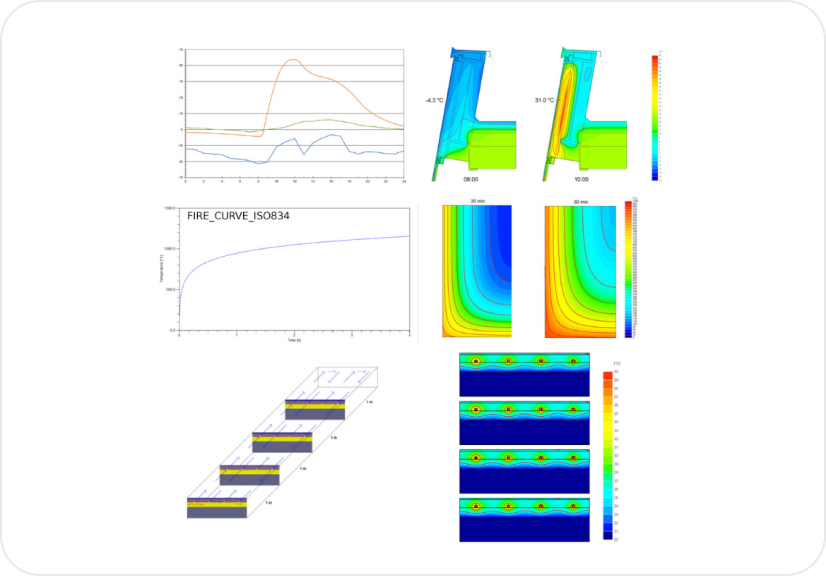
Heat transfer analysis of structures in a fire
Technology Application Status
- Vietnam V 1, 2, 3 sites – Conducting fire-resistant coating defect response and technical support
- Hi-Tech DS section roof panels - Implementing fire safety improvement technology (P5 -)
- Hi-Tech site - Evaluating fire safety performance for applied composite materials
Tile and Stone Attachment Method Verification Technology
Technology Overview and Description
- This technology assesses the adhesive strength of various finishing materials, such as tiles and stones, for floors and walls based on substrate conditions to prevent detachment and damage. It also evaluates the shear bond strength to determine the ability to withstand deformation.
Technology Application Status
- Verifying Samsung Medical Center staircase tile adhesive materials
- Evaluating urethane adhesive as an alternative to epoxy adhesive for tiles
Assessment of tile adhesives
